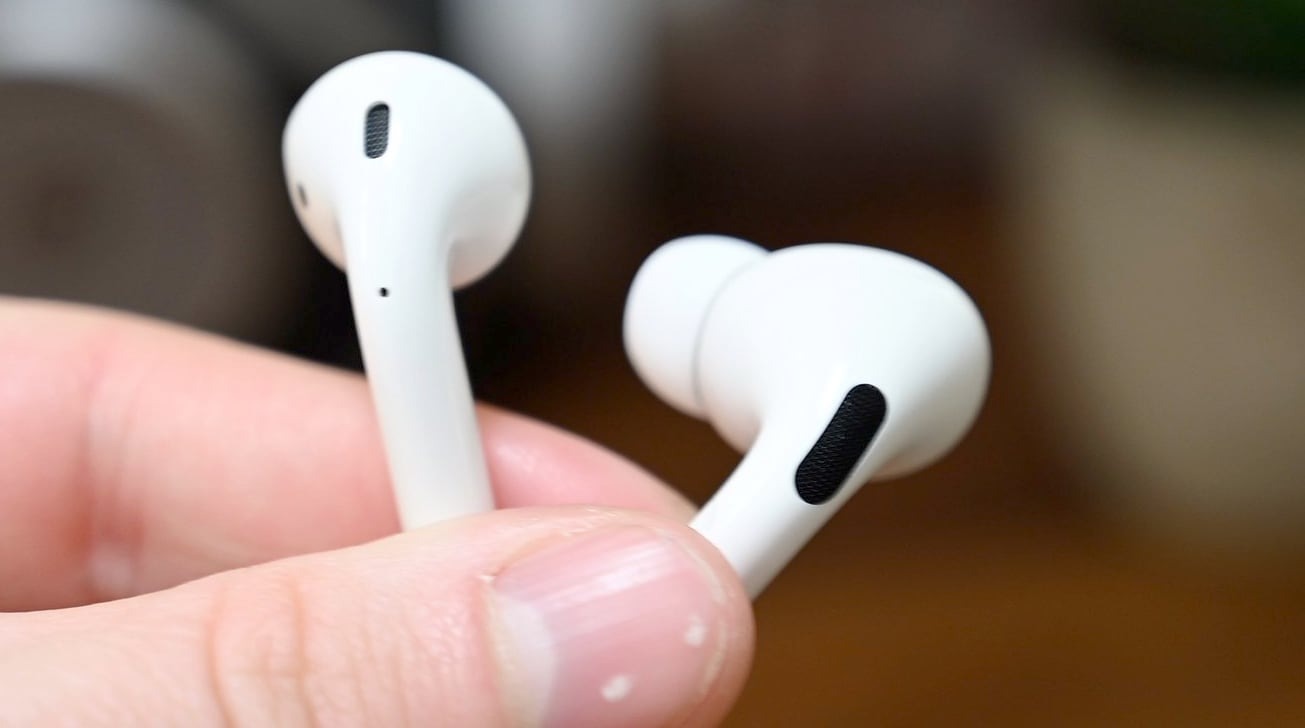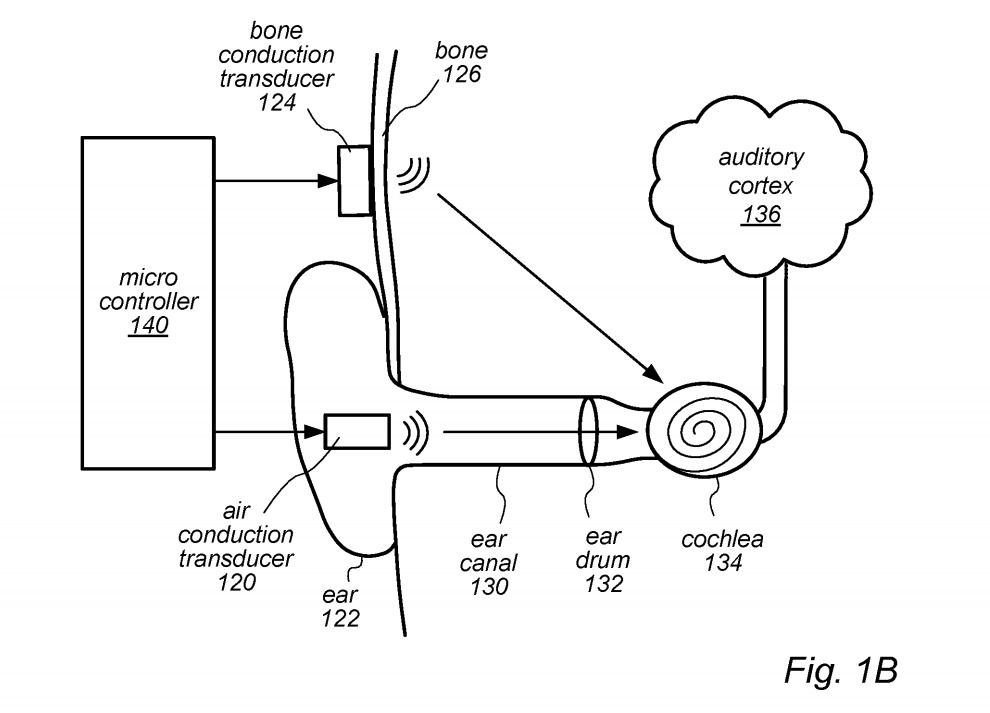A future iteration of AirPods could take advantage of bone conduction technology to provide audio in a variety of situations where normal earphones aren't effective, with a proposed system combining bone conduction with normal air-based sound transmission.
Over the years, bone conduction has been a way for people to listen to music or take phone calls using a headset, without relying on earpieces. Instead of transmitting sound through the air, bone conduction devices instead contact specific points on a user's head, sending sound into the skull and through to the ear, where the vibrations are translated into sound.
Such systems have their benefits, for example by enabling the ear canals to be free and allowing users to hear their environment at the same time as audio from the device. It is also useful in some cases where there is damage to the ear that prevents normal headphone or earphone use. It also helps in situations where air-based methods like speakers fail, such as if a user is underwater.
There are some drawbacks to bone conduction that limits its utility, with the first being its ability to work at high frequencies. While human hearing typically ranges from 20 Hertz to 20,000 Hz, bone conduction is only really effective at sub-4,000Hz levels, with audio quality deteriorating at higher Hertz ranges.
The fact that it needs contact with the head is also an issue, as it can tickle the user at high intensities, making it uncomfortable to wear.
In a patent granted to Apple on Tuesday by the US Patent and Trademark Office titled "Multipath audio stimulation using audio compressors," Apple suggests the issues with bone conduction could be mitigated, in part through the support of standard air conduction methods.
The plan involves two general areas of attack, covering audible ranges and compression.
Audio signals are filtered into three categories, consisting of high-frequency components, mid-frequency components, and low-frequency components. The mid-frequency and low-frequency components are then processed using compressors to reduce the dynamic range, and then put together into a combined component.
This combined signal is then sent through the user's skull using bone conduction, due to consisting of low-frequency and mid-frequency signals within its range of utility. The high-frequency component, which wouldn't be effective when sent through bone conduction, is instead sent through the air to the ear as normal.
Apple does suggest that the air conduction system is constructed in such a way that it does not block the ear canal from other audio sources, namely it would still allow the user to hear the environment.
The result is a system where the user has the benefits of bone conduction over the environmental audio, while still receiving the benefits of the full audio range by receiving high-frequency sounds via another method. In cases where the environmental audio may drown out the high-frequency sound, users would still get the mid- and low-frequency signals via bone conduction.
The filing lists its inventor as Tomlinson Holman, and was initially filed on May 25, 2018.
This is not the first time Apple has looked at using bone conduction technology. Patent filings from 2014 and 2015 indicate it was looking into wireless earphones using bone conduction. Despite the years of work, Apple has yet to introduce some form of bone-conducting product, but the existence of its AirPods lineup seems like a suitable candidate for the technology's use.
 Malcolm Owen
Malcolm Owen









-m.jpg)






 Wesley Hilliard
Wesley Hilliard
 Christine McKee
Christine McKee

 William Gallagher
William Gallagher
 Andrew Orr
Andrew Orr







-m.jpg)




8 Comments
I’ve been using Aftershokz bone conduction headphone for years. I am excited to see how Apple’s Airpods perform, especially playing 3D sounds like the Dolby ATMOS new headphone consumer implementation.
^^
Goodness. Samsung will copy and claim Apple copied that.
Looks interesting.